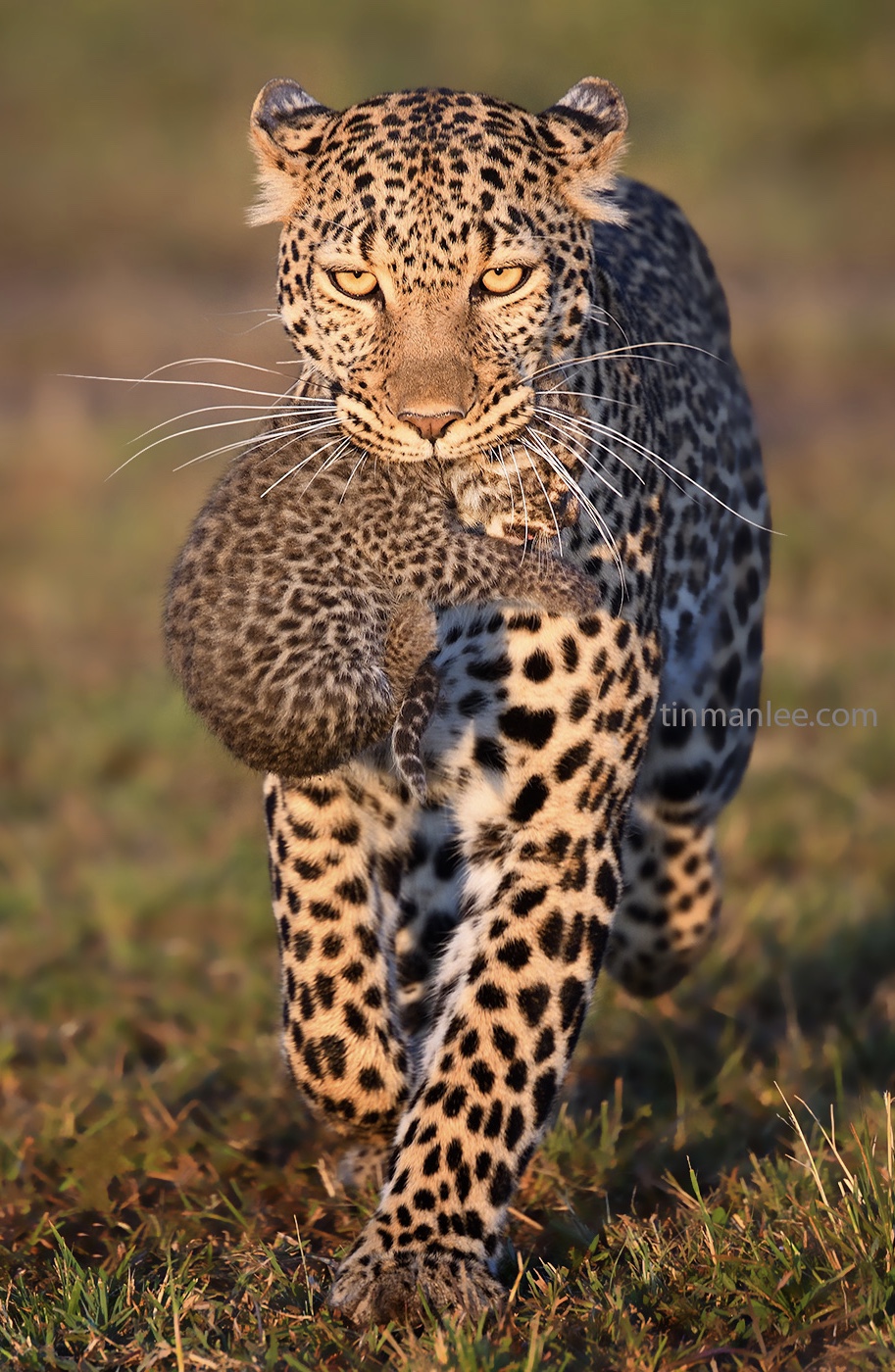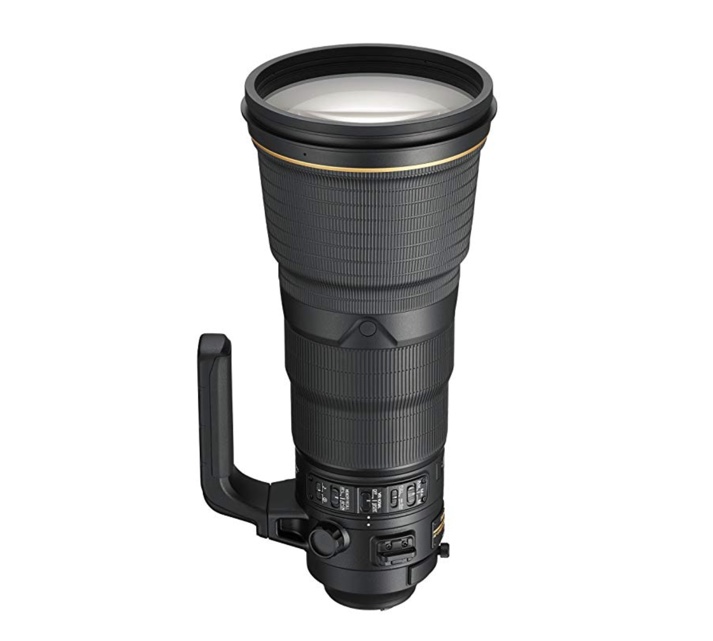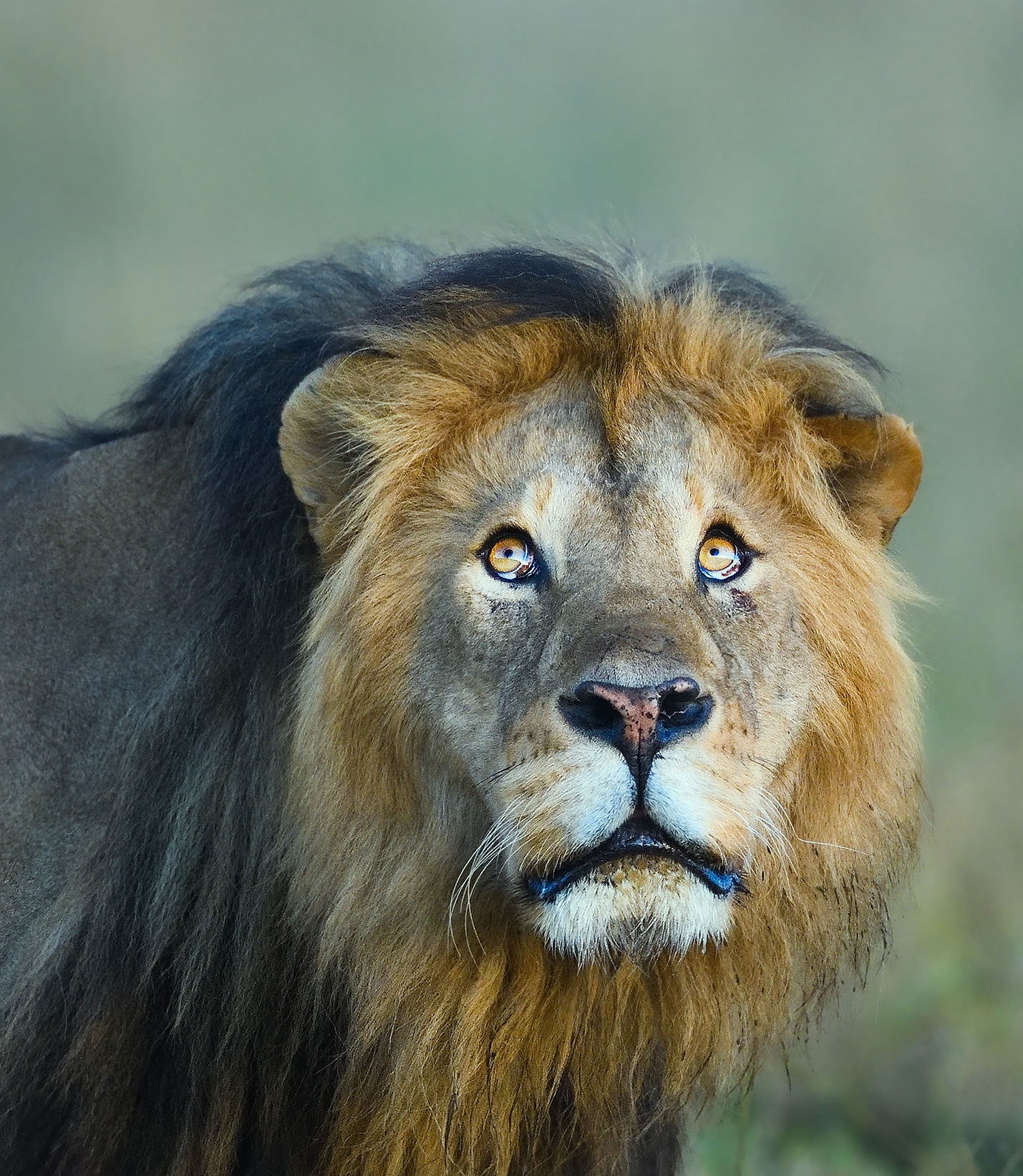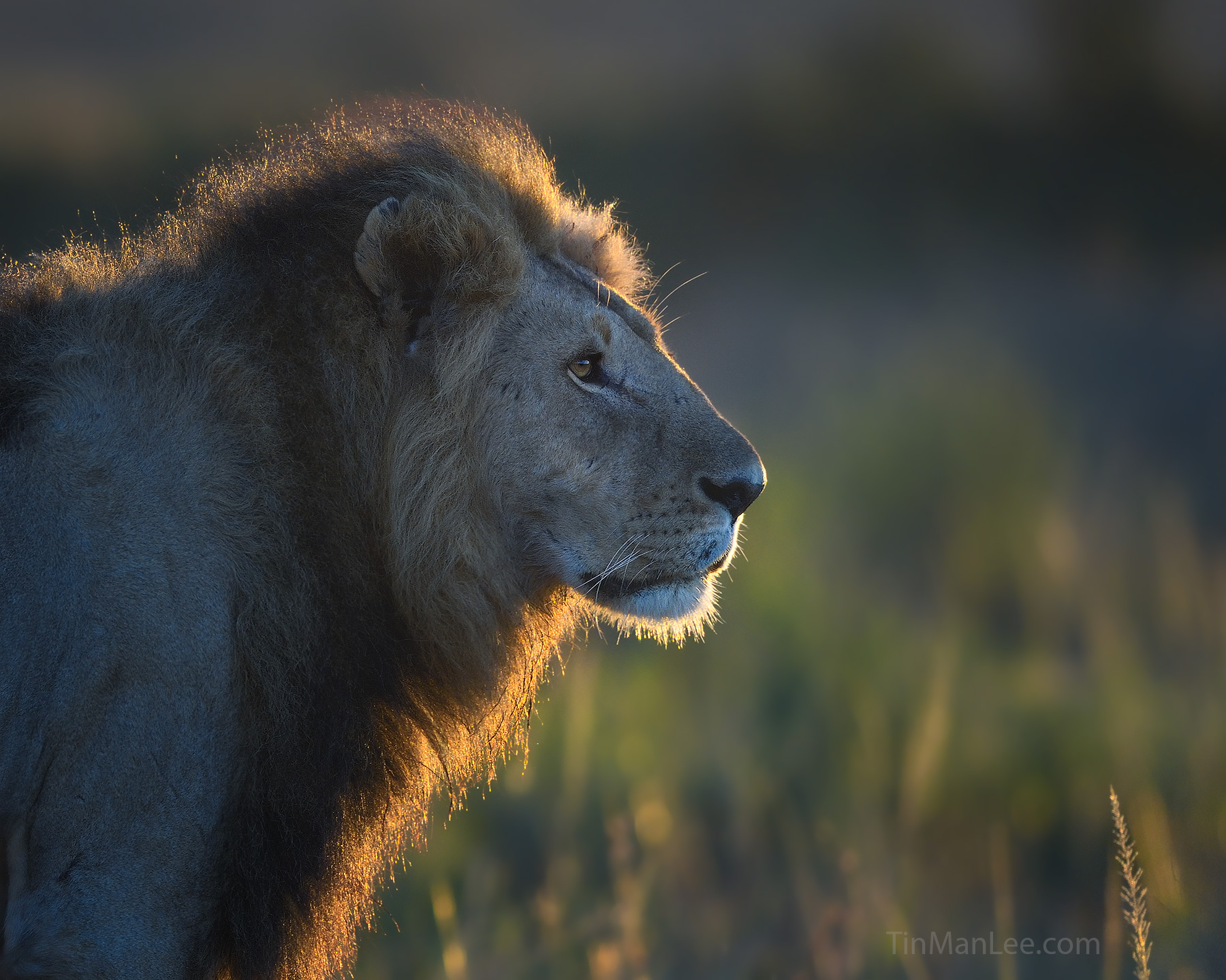The Best Three Lenses For Wildlife Photography In Kenya
Both of my legs had lost the strength completely as if they were numbed. Sitting in the open-top land cruiser, I was biting the nails of my right hand.
"Is there anything we can do?" I asked Federico. I knew it was a meaningless question, for that we should never interfere when nature took its cause. But it's different this time.
The lioness kept sniffing, and was walking closer and closer to where Luluka, the mother leopard, and her newly-born cub, were hiding, a little hole under the ground, with just a small patch of tall grass covering it. The lioness was just 25 feet away. She stopped, looking forward, so focused.
If she knew Luluka was just such a short distance away, she could easily strike and kill them both. Lions would not allow other animals to compete for food in the same territory. And much worse, it seemed that she was with a male lion, sleeping not too far from here. They were a mating pair. Luluka stood no chance if these two lions saw her.
I couldn't breathe.
A few seconds felt like an eternity.
My palms were all sweaty. I felt helpless.
Just a few minutes ago, I had one of the best animal sightings in my whole life. And now, all the joy was gone. I feared she may not make it.
Our group was originally hoping to find some lions at sunrise that morning. But we stopped by a spot where our leader knew of a female leopard that frequented.
We quickly saw her hiding behind some tall bush. It was still predawn and it was pretty dark. There was no photography opportunity. ISO 8000 and 1/30s kind of crappy photography.
Sensing that a male leopard was also nearby, this female leopard looked a bit tense and skittish.
"She has a very young cub. She's going to hide with the cub and not come out," our leader said. "Maybe we should move on."
After watching her for about half an hour, she disappeared into the tall bush for good, and most of the other vehicles left. Some buffalos were nearby in golden light, and rumors were that some lions were not too far away. Golden buffao or lion seemed like a better choice than a hidden leopard...
I almost tempted to leave the spot to take some pics of buffalo, when Luluka reappeared again behind the tall grass.
Then she disappeared again, and it looked like she went into a hole underneath the ground. Didn't see clearly as it was behind tall bush.
"Oh my, she may be moving her cub. Get ready," our leader whispered.
Lo and behold, in a blur, she came out from the tall bush, and... I had to rub my eyes to be sure... she really had something in her mouth, dangling.
"Holy shit...," I screamed in my lowest voice to myself, while grabbing my camera even though my arm felt as if its numbed by excitement. That dangling "thing" was her cub. Still so small the eyes were still closed.
Such was my first ever encounter with a leopard in Maasai Mara, Kenya, a place I dreamed to visit since I was a kid.
Quite clearly knowing that it might be the only chance in my life, I kneeled down next to my seat in lightning speed, dialed my settings for the optimal fast action in low light condition, and I tried to lock focus and blast the shutter of my camera. My thumb almost didn't listen to me as my adrenaline was rushing.
Luluka and her cub. Nikon D850, Nikon 180-400 f/4, f/4, 1/1250s, ISO 1000.
I would have never imagined my first trip to Africa would have started like that...
I visited quite a few places in this trip, including Maasai Mara, Samburu, Amboseli and Ol Pejeta. If you haven't been to Kenya, these may all sound completely new to you, but very soon you will know these places very well.
Having started photography 20 years ago, and getting serious in wildlife photography for 10 years, I spent my time mostly in Alaska, Yellowstone National Park, Washington, Florida, and here in California. Due to a lot of reasons, this was only my first time to go to Africa, even though I had been reading books, drawing lions, leopards and cheetahs, and watching African Wildlife documentaries repeatedly all my life.
Now that I just finished my Kenya trip, I looked back and concluded that these 3 lenses are a must-have if you want to get the best images in Kenya, for those who will be going to Africa soon, or plan to do so in your bucket list.
Since I am using a Nikon D850 as the camera body, I will talk only about Nikon lenses. For the reasons why I chose D850, please check out my youtube channel.
"Human eyes see things at f/4. For low light photography, you need f/2.8 to see twice better" --Tin Man Lee
Even though I used the 180-400 f/4 to photograph this leopard, my favorite lens for this trip, SURPRISE, was the 400mm f/2.8.
Lens #1: 400mm f/2.8 FL VR
Just a year ago, I would have never thought about 400 2.8. My go-to lens had always been the 500mm f/4 and 600mm f/4. That's what all the "Pros" used. That's what the gurus taught us to buy.
And it's true, the 500 and 600mm primes produced images with absolutely stunning image quality. One can't think of any way that an image could be sharper than those produced by these lenses.
I thought 400 2.8 was a joke. It's as heavy as the 600mm f/4. And it's so... short. I constantly needed to put a 1.4x teleconverter on my 600mm for most of my photography, giving me an effective focal length of 840mm. How would a 400mm be enough?
And with the Nikon 500mm f/5.6 PF weight like a feather with an extra 100mm reach and $7,000 cheaper, why would anyone ever needed the 400 2.8?
Everything changed from a tiger trip to India when I bought it in the last minute just hoping that it could help blur the messy background of India forest.
Whenever I used the 400mm 2.8, the images all came out MUCH sharper than my 600mm. And the focus speed was AT LEAST twice as fast. I had since used the 400mm almost exclusively in India, Japan, Chile and Alaska.
It didn't dawn on me at first, but turned out the focusing speed and image sharpness was closely related. It's NOT about the glass in this case because both used top-notch glass.
I don't want to go into details, but a f/2.8 lens let in double the light compared to a f/4 lens, so it allows for a much quicker auto-focus.
The biggest difference between photographing in Alaska and Africa is that the sun appears to be rising and dropping much quicker in Africa because it's close to the Equator.
I was in disbelief the first time I saw the sunrise. It was like watching the typical sunrise in fast-forward mode. From breaking thru the horizon to having harsh light literally took less than 30 minutes. And that's it. Being mostly sunny in July to September, that's it. Good light only lasts for 30 minutes at sunrise and 30 minutes at sunset.
In many occasions, the f/4 lenses would stop auto focusing a few mins before sunrise or after sunset, but the 400mm f/2.8 would still auto focus without any issues. That means a few more minutes of photography in relatively low ISO below ISO 1600, and the photos would still be usable.
With wildlife a lot closer to the vehicle than places like Yellowstone National Park, it's no question that the 400mm 2.8 is the best lens for Kenya.
Nikon 400mm f/2.8 FL VR
Here's a photo taken by 400mm 2.8 at 1/800s, f/2.8 and ISO 640:
And this:
Next, I will talk more about ISO and the other two must-bring lenses to Kenya.
To be continued... Let me know what you think in the comments.
Tin Man
If you want to be notified of new blog post, please sign up for my newsletter at tinmanlee.com
If you want to see what other gear I use, please check out my gear page and use those links to purchase. (I get about 3% commission if you use those links to purchase so thank you in advance)
If you want to learn how I edit my photos, please check out my 90 minutes free training here.
If you want to transform your wildlife photography, please check out my 3-hour free training here.
I also have written photography e-book and video guides to Alaska, Colorado, and Falkland Islands.






Congratulations for a once in a lifetime shot. Many regulars to Africa never get that. I have never been to Africa before so I cannot comment on the light but my first thought is why do the main pros not use the 400f2.8 which has been around for many years? Once you put a 1.4 X in to get 550mm you are at f4 like the 600mmf4 primes. Is cropping from 400 equivalent to 600mm? I sold my 400mm because i thought the 180-400/1.4x would be a do everything lens instead of carrying so much due to weight limits! My D5 compensates for the low light instead and it is a better wildlife camera IMO. But I am just an amateur still learning. I would appreciate your thoughts on that please. Thanks.
Wait, so what happened with the lion????
Hi Tin Man, I really enjoyed this article. Thank you for sharing the amazing photos. What I appreciate most is the reasons you used specific Nikon lenses and your reason for choosing the 400 f2.8. Your comments on focusing speed makes sense. Should I conclude that if a teleconverter is added to the 400/2.8 that the focusing speed and accuracy would then be similar to the 600 f.4? Thanks for your generosity in sharing information about wildlife photography. Mike McIntosh / http://www.bearwithus.org .
I’ve used a 400 f/2.8 for years in low light and when relatively close to subjects, however, with current travel weight limitations I started taking the EF 400DO f/4 II. With the new and much lighter Canon 400 f/2.8 III I am now back to the f/2.8. The f2.8 aperture can utilize the better AF cross-point sensors. Moreover, with shallow DOF the subject is better isolated from the background allowing the camera to lock on quicker. 400 f/2.8 lenses have always been extremely sharp, hence even with converters they produce superior results.
Hi my wife Ina has had a 400 f2-8 for about 7 years and loves it took an age to save for it but totally worthwhile